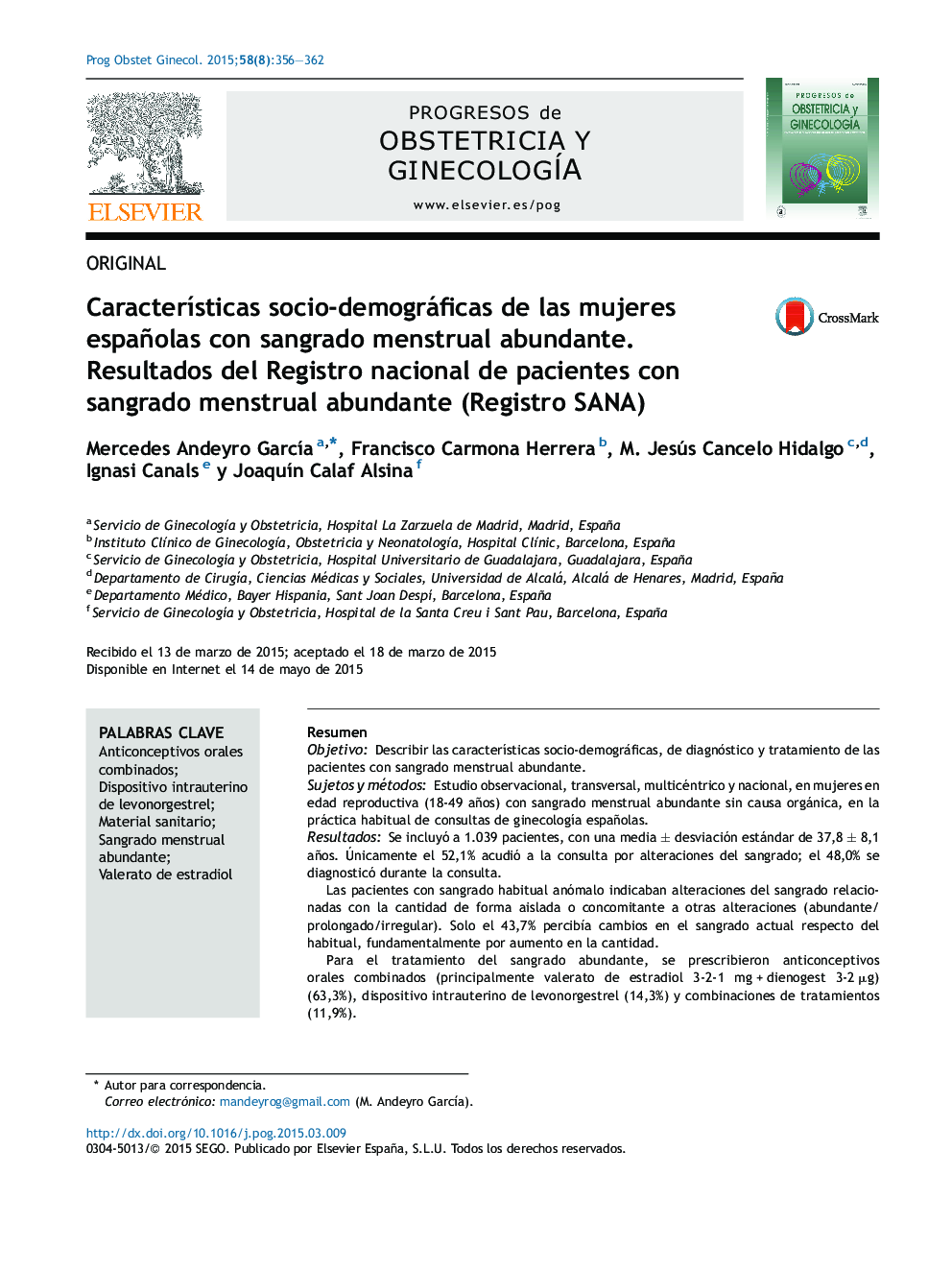| کد مقاله | کد نشریه | سال انتشار | مقاله انگلیسی | نسخه تمام متن |
|---|---|---|---|---|
| 3968495 | 1256496 | 2015 | 7 صفحه PDF | دانلود رایگان |

ResumenObjetivoDescribir las características socio-demográficas, de diagnóstico y tratamiento de las pacientes con sangrado menstrual abundante.Sujetos y métodosEstudio observacional, transversal, multicéntrico y nacional, en mujeres en edad reproductiva (18-49 años) con sangrado menstrual abundante sin causa orgánica, en la práctica habitual de consultas de ginecología españolas.ResultadosSe incluyó a 1.039 pacientes, con una media ± desviación estándar de 37,8 ± 8,1 años. Únicamente el 52,1% acudió a la consulta por alteraciones del sangrado; el 48,0% se diagnosticó durante la consulta.Las pacientes con sangrado habitual anómalo indicaban alteraciones del sangrado relacionadas con la cantidad de forma aislada o concomitante a otras alteraciones (abundante/prolongado/irregular). Solo el 43,7% percibía cambios en el sangrado actual respecto del habitual, fundamentalmente por aumento en la cantidad.Para el tratamiento del sangrado abundante, se prescribieron anticonceptivos orales combinados (principalmente valerato de estradiol 3-2-1 mg + dienogest 3-2 μg) (63,3%), dispositivo intrauterino de levonorgestrel (14,3%) y combinaciones de tratamientos (11,9%).ConclusionesEl sangrado anómalo es prevalente, siendo una prioridad su diagnóstico mediante una evaluación adecuada.
ObjectiveTo describe the socio-demographic, diagnostic and treatment characteristics of patients with heavy menstrual bleeding.Subjects and methodsAn observational, cross-sectional, multicenter, national study was conducted in women of reproductive age (18-49 years) with heavy menstrual bleeding with no organic cause attending routine gynecology consultations in Spain.ResultsThis study included 1,039 patients, with a mean age of 37.8 ± 8.1 years. Only 52.1% of the women attended their gynecologist due to bleeding abnormalities and 48.0% were diagnosed during the visit.Patients with longstanding abnormal bleeding reported alterations in quantity, either alone or concomitant to other abnormalities (heavy/prolonged/irregular bleeding). Only 43.7% perceived changes in current bleeding versus usual bleeding, mainly due to an increased quantity.The main drugs prescribed for the treatment of heavy bleeding were combined oral contraceptives (mainly estradiol valerate 3-2-1 mg + dienogest 3-2 μg) (63.3%), levonorgestrel intrauterine system (14.3%), and combined treatments (11.9%).ConclusionsAbnormal bleeding is prevalent. Diagnosis through appropriate assessment is a priority
Journal: Progresos de Obstetricia y Ginecología - Volume 58, Issue 8, October 2015, Pages 356–362